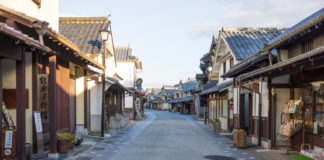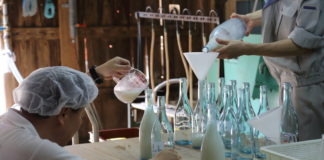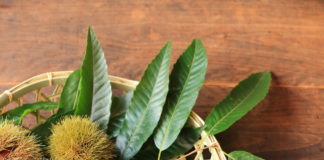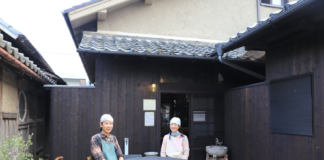The Six Ancient Kilns, also known as Rokkoyo in Japanese, refer to a group of historic pottery production sites in Japan that have been renowned for centuries for their unique ceramic traditions. Each kiln represents a distinct style and technique, showcasing the rich cultural heritage of Japanese pottery. Let’s explore these six ancient kilns:
- Shigaraki Kiln: Located in Shiga Prefecture, the Shigaraki Kiln is famous for its robust, rustic pottery. Utilizing local clay rich in iron content, Shigaraki ware exhibits a distinctive reddish-brown color and distinctive kiln marks. The kiln specializes in the production of large outdoor vessels and whimsical Tanuki statues.
- Bizen Kiln: Situated in Okayama Prefecture, the Bizen Kiln is celebrated for its unglazed stoneware characterized by its natural beauty and earthy tones. Bizen ware is fired for long durations using traditional wood-burning kilns, resulting in unique patterns and textures, such as reddish-brown and gray hues and charming kiln effects known as “Hidasuki” and “Goma.”
- Tamba Kiln: Located in Hyogo Prefecture, the Tamba Kiln is known for its distinctive Tamba-yaki pottery. Tamba ware boasts a rich history dating back over 800 years and is recognized for its robust forms, earthy glazes, and charming ash deposits. Tamba pottery includes a wide range of vessels, tableware, and tea utensils, showcasing the versatility of this traditional craft.
- Echizen Kiln: Situated in Fukui Prefecture, the Echizen Kiln is renowned for its Echizen-yaki ceramics, which have been produced for over 800 years. Echizen ware features a variety of styles, including the sophisticated Oribe ware known for its vibrant green glaze and bold geometric patterns. The kiln also produces delicate and refined Shino ware with its creamy white glaze and charming brushwork designs.
- Seto Kiln: Located in Aichi Prefecture, the Seto Kiln is one of Japan’s oldest and most influential pottery centers. Seto-yaki, the pottery produced here, encompasses a wide range of styles, including the renowned Seto Sometsuke, which features intricate blue-and-white designs. Seto ware also includes the classic Seto Oribe, Seto Shino, and Setoguro styles, each with its distinct characteristics.
- Tokoname Kiln: Situated in Aichi Prefecture, the Tokoname Kiln has a history spanning over 900 years, making it one of Japan’s oldest pottery sites. Tokoname ware is known for its functional and elegant ceramic teapots, which are highly regarded by tea enthusiasts worldwide. The kiln’s clay-rich soil contributes to the teapots’ excellent heat retention properties and exquisite craftsmanship.
The Six Ancient Kilns represent the diverse and extraordinary world of Japanese pottery, showcasing the skills and artistry passed down through generations. Visiting these kilns and exploring their unique creations is a captivating journey into Japan’s rich cultural heritage.






